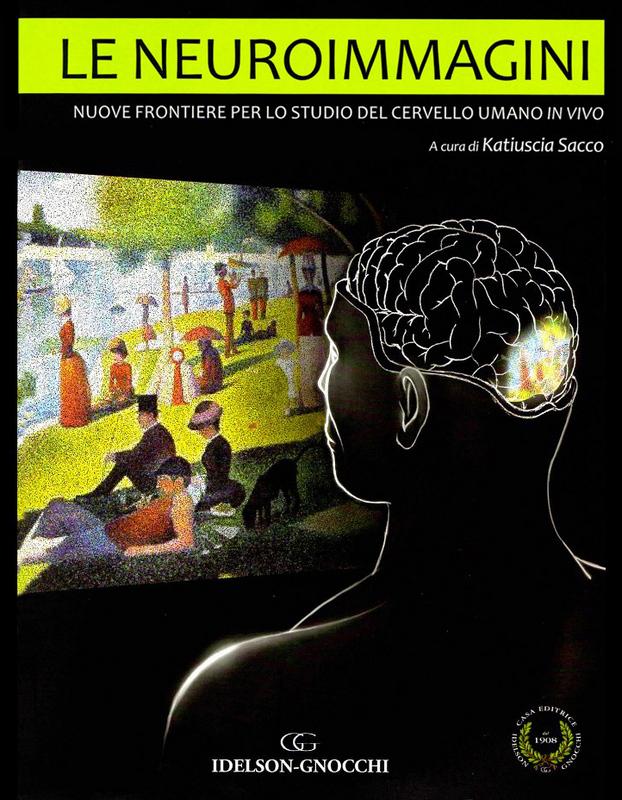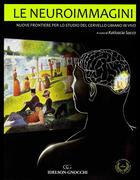Imaging e plasticità cerebrale
Componenti
- Sacco Katiuscia (Coordinatore)
- Geminiani Giuliano Carlo (Componente)
- Zettin Marina (Componente)
- Alessandro Cicerale (Componente)
- Irene Ronga (Componente)
- Pasqualina Perna (Dottorando)
Contatti

Settore ERC
Attività
We study the mind-brain system through several methods, including human participant experiments, injury studies, neuroimaging techniques (in particular fMRI), brain stimulation (in particular tDCS). From a theoretical point of view, the aim is a greater knowledge of cognitive functions and of their neural correlates. From an applicative point of view, the aim is the development of clinical protocols for the assessment and/or rehabilitation of patients with central nervous system dysfunctions.
Regarding the motor functions, we have realized a gait rehabilitation protocol, in collaboration with the Department of Mechanical and Aerospace Engineering of the Polytechnic of Turin. The protocol consists of sensory motor stimulation implemented through a robotic orthosis that elicits lower limbs movements (Pneumatic Interactive Gait Rehabilitation Orthosis, P.I.G.R.O.) and a cognitive training performed by using the motor imagery.
With regard to cognitive functions, in collaboration with the GIPSI research group, we have developed a battery for communication skills assessment (Assessment Battery for Communication, ABaCo) and a rehabilitation protocol based on the same theoretical assumptions and focused on training of dysfunctional communicative abilities.
In collaboration with IT companies, we develop methods for memory and spatial abilities training and rehabilitation using virtual reality technology.
We use neuroimaging techniques with different purposes, specifically to explore brain changes (plasticity) after training.
Crucially, with neuroimaging techniques, we also study the neural correlates of motor and cognitive functions in healthy subjects.
Additionally, we use brain stimulation techniques to rehab neurological deficits in patients with brain injury.
Prodotti della ricerca
- Belforte, G., Eula, G., Quaglia, G., ..., Cauda, F., Sacco, K. (2010). MR compatible device for active and passive foot movements. International Journal of Mechanics and Control.
- Sacco K, Cauda F, D'Agata F, Duca S, Zettin M, Virgilio R, Nascimbeni A, Belforte G, Eula G, Gastaldi L, Appendino S, Geminiani G. (2011). A combined robotic and cognitive training for locomotor rehabilitation: evidences of cerebral functional reorganization in two chronic traumatic brain injured patients. Front Hum Neurosci. 23;5:146.
- Belforte, G., Eula, G., Sirolli, S., ..., Geminiani, G., Sacco, K. (2014). Bra.Di.P.O. and P.I.G.R.O.: Innovative devices for motor learning programs. Journal of Robotics.
- Belforte, G., Eula, G., Sirolli, S., ... Virgilio, R., Sacco, K. (2017). Control curves for a new lower limbs robotic exoskeleton obtained from the study of joints angles during an unloaded human walking. International Journal of Mechanics and Control.
- Sacco, K., Belforte, G., Eula, G., … Virgilio, R., Zettin, M. (2018). P.I.G.R.O.: An active exoskeleton for robotic neurorehabilitation training driven by an electro-pneumatic control. Mechanisms and Machine Science.
- Ferrarin M, Rabuffetti M, Geda E, Sirolli S, Marzegan A, Bruno V, Sacco K. (2018). Influence of the amount of body weight support on lower limb joints' kinematics during treadmill walking at different gait speeds: Reference data on healthy adults to define trajectories for robot assistance. Proc Inst Mech Eng H. 232(6):619-627.
With regard to cognitive functions, in collaboration with the GIPSI research group, we have developed a battery for communication skills assessment (Assessment Battery for Communication, ABaCo) and a rehabilitation protocol based on the same theoretical assumptions and focused on training of dysfunctional communicative abilities.
- Angeleri R, Bosco FM, Gabbatore I, Bara BG, Sacco K. (2012). Assessment Battery for communication (ABaCo): normative data. Behav Res Methods. 44(3):845-61.
- Bosco FM, Angeleri R, Zuffranieri M, Bara BG, Sacco K. (2012). Assessment Battery for Communication: development of two equivalent forms. J Commun Disord. 45(4):290-303.
- Gabbatore, I., Angeleri, R., Bosco, F.M., ..., Bara, B.G., Sacco, K. (2014). Assessment of communicative abilities in aphasic patients. Minerva Psichiatrica
- Bosco FM, Gabbatore I, Gastaldo L, Sacco K. (2016). Communicative-Pragmatic Treatment in Schizophrenia: A Pilot Study. Front Psychol. 7:166.
- Parola, A., Gabbatore, I., Bosco, F.M., ..., Gindri, P., Sacco, K. (2016). Assessment of pragmatic impairment in right hemisphere damage. Journal of Neurolinguistics.
- Gabbatore I, Bosco FM, Geda E, Gastaldo L, Duca S, Costa T, Bara BG, Sacco K. (2017). Cognitive Pragmatic Rehabilitation Program in Schizophrenia: A Single Case fMRI Study. Neural Plast. 1612078.
In collaboration with IT companies, we develop methods for memory and spatial abilities training and rehabilitation using virtual reality technology.
We use neuroimaging techniques with different purposes, specifically to explore brain changes (plasticity) after training.
- Sacco K, Cauda F, D'Agata F, Mate D, Duca S, Geminiani G. (2009). Reorganization and enhanced functional connectivity of motor areas in repetitive ankle movements after training in locomotor attention. Brain Res. 1297:124-34.
- Sacco K, Cauda F, Cerliani L, Mate D, Duca S, Geminiani GC. (2006). Motor imagery of walking following training in locomotor attention. The effect of "the tango lesson". Neuroimage. Sep;32(3):1441-9.
- Sacco K, Gabbatore I, Geda E, Duca S, Cauda F, Bara BG, Bosco FM. (2016). Rehabilitation of Communicative Abilities in Patients with a History of TBI: Behavioral Improvements and Cerebral Changes in Resting-State Activity. Front Behav Neurosci 10:48.
- Sacco K, Sacchetti B. (2016). Mind-Brain Plasticity and Rehabilitation of Cognitive Functions: What Techniques Have Been Proven Effective? Front Behav Neurosci. 20;10:232, Editorial.
- Galetto V. & Sacco, K. (2017). Neuroplastic Changes Induced by Cognitive Rehabilitation in Traumatic Brain Injury: A Review. Neurorehabilitation and Neural Repair 31; 9:800-813.
Crucially, with neuroimaging techniques, we also study the neural correlates of motor and cognitive functions in healthy subjects.
- Cauda F, Geminiani G, D'Agata F, Duca S, Sacco K. (2011). Discovering the somatotopic organization of the motor areas of the medial wall using low-frequency BOLD fluctuations. Hum Brain Mapp. 32(10):1566-79.
- Garbarini F, Boero R, D'Agata F, Bravo G, Mosso C, Cauda F, Duca S, Geminiani G, Sacco K. (2014). Neural correlates of gender differences in reputation building. PLoS One 9(9):e106285.
Additionally, we use brain stimulation techniques to rehab neurological deficits in patients with brain injury.
- Sacco K, Galetto V, Dimitri D, Geda E, Perotti F, Zettin M, Geminiani GC. (2016). Concomitant Use of Transcranial Direct Current Stimulation and Computer-Assisted. Training for the Rehabilitation of Attention in Traumatic Brain Injured Patients: Behavioral and Neuroimaging Results. Front Behav Neurosci. 2016 Mar 31;10:57.





